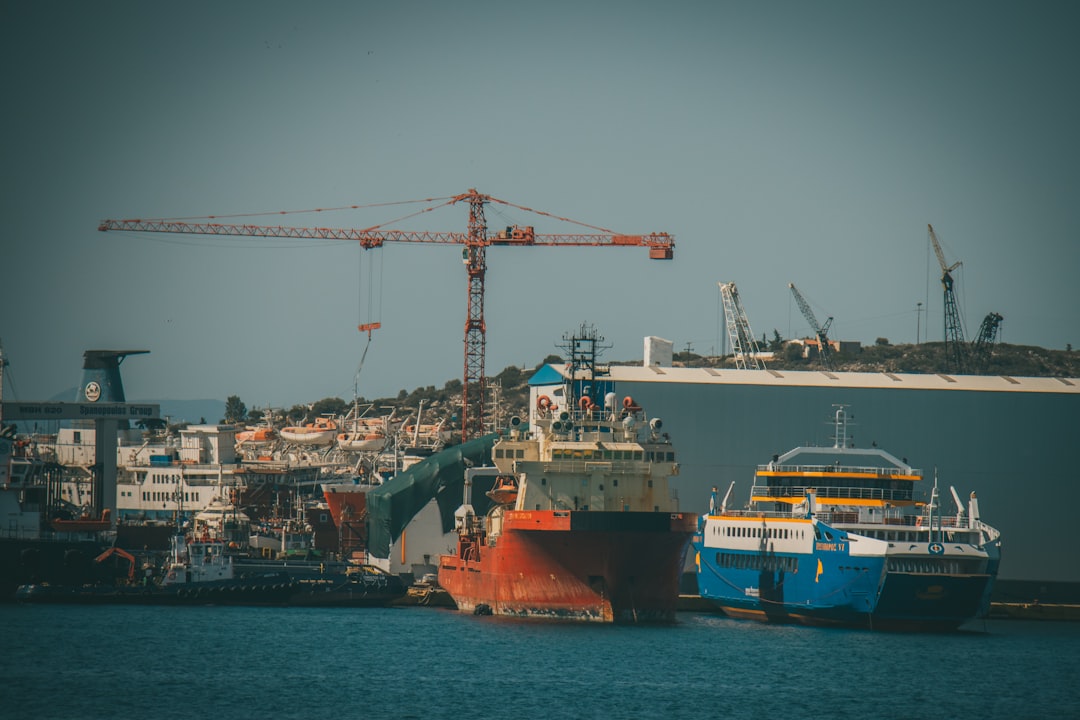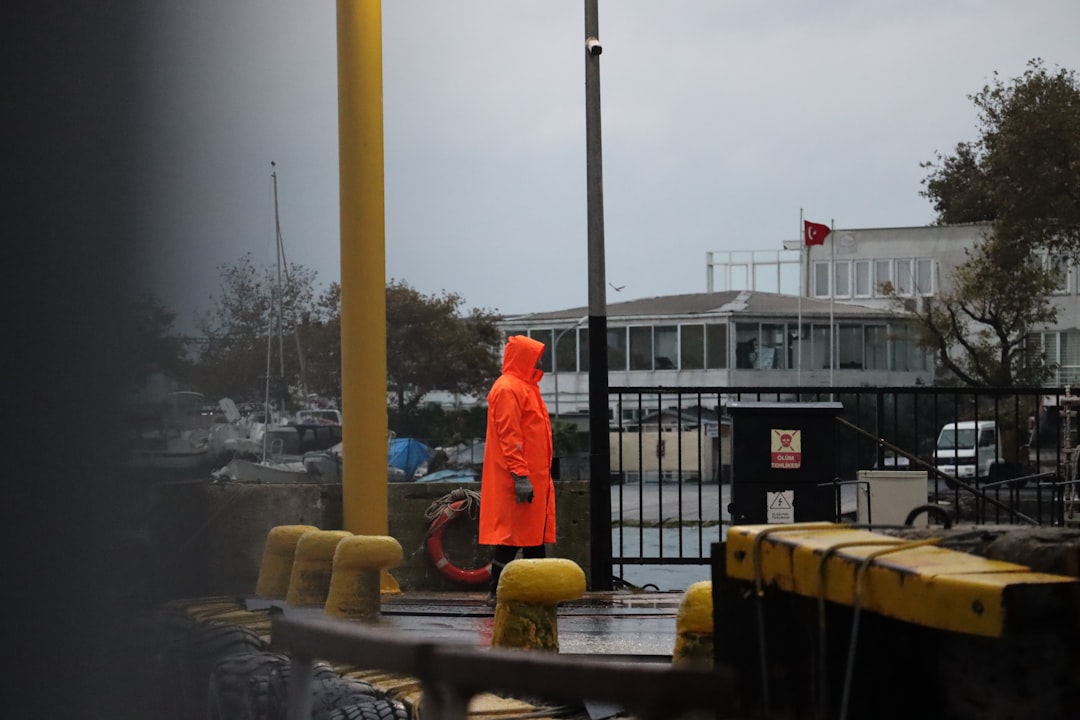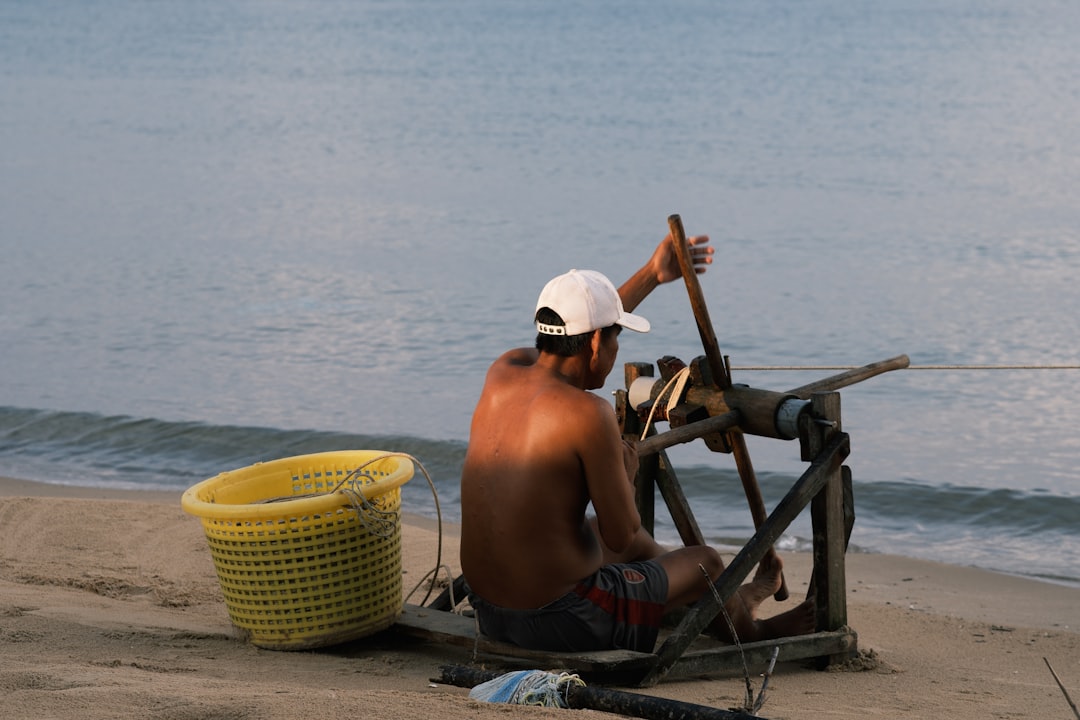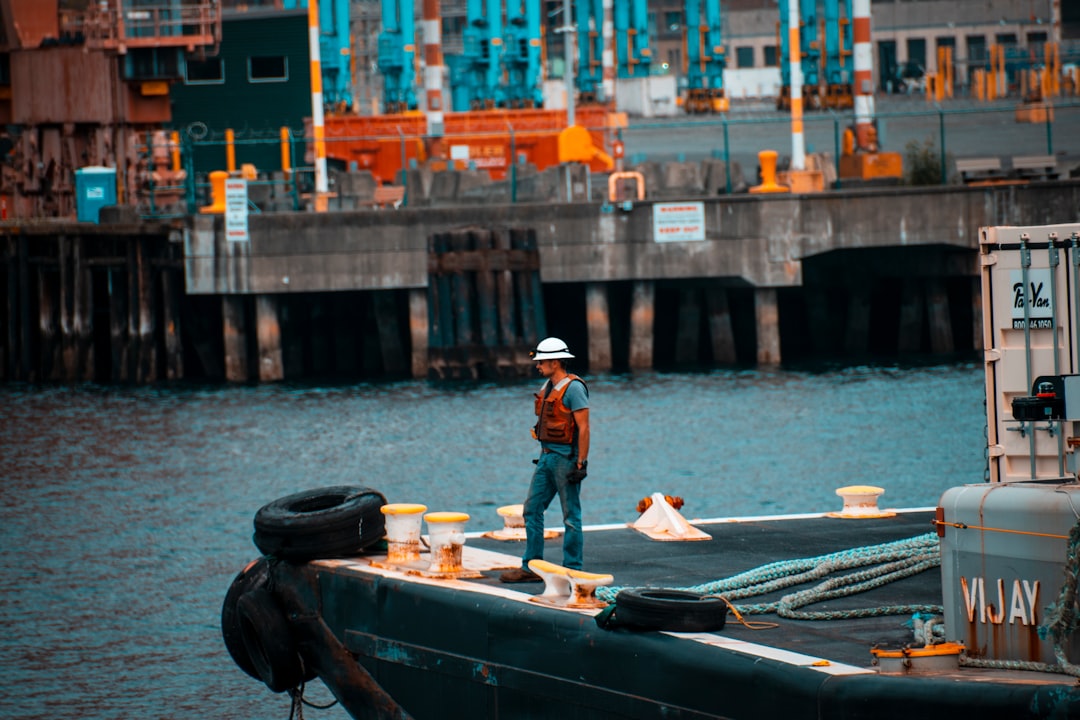

Engage prospects with a scan and streamline customer engagement with FREE QR code marketing tools by Sona – no strings attached!
Create a Free QR CodeFree consultation

No commitment

Engage prospects with a scan and streamline customer engagement with FREE QR code marketing tools by Sona – no strings attached!
Create a Free QR CodeFree consultation

No commitment
Marine contractors face growing challenges bridging the persistent gap between hands-on project execution and increasingly complex digital workflows. In fast-paced marine construction environments, critical workflows such as client onboarding, compliance documentation, project milestone tracking, and safety checks are often still managed through paper forms or fragmented spreadsheets. This introduces costly delays, data silos, and frequent loss of visibility when project updates or compliance reminders slip through the cracks and stakeholders miss vital information.
As the industry accelerates digital transformation, QR codes have emerged as a practical and efficient link between field operations and back-office systems. By strategically placing QR codes on job sites, heavy equipment, service vessels, or project documents, marine contractors can break through old bottlenecks by instantly connecting workers and partners to digital forms, technical libraries, maintenance audits, or safety modules. Modern approaches make these touchpoints frictionless: no app required and no need to chase down staff for updates, even as projects and regulations evolve.
Deployed effectively, QR codes empower marine contractors to close compliance gaps in real time, reduce operational friction, keep project stakeholders informed, and streamline critical data collection. For firms dealing with lost opportunities due to incomplete paper trails or missing high-value activity, QR can be the crucial thread ensuring every workflow, record, and compliance check is both documented and actionable. Here is how marine construction teams are driving measurable results through smart, targeted QR codes in marketing.

Marine contractors have long struggled to keep physical project assets, regulatory documents, and daily check-ins in sync, often resulting in missed compliance deadlines or lost project data. QR codes are addressing these pain points by transforming labor-intensive, analog processes such as logbooks, incident reporting, jobsite entry, and safety certification into fully digital, auditable workflows. Instead of relying on clipboards at the gangway or binders in the wheelhouse, crews can scan a QR code to complete a safety induction, log an equipment check, or access the latest environmental controls in seconds.
This shift replaces outdated processes and speeds up execution. It also removes ambiguity by making every scan an attributable action. Marine professionals in the field do not need a username, password, or app download. They need a camera-equipped device and a clear call to action. Behind the scenes, platforms like Sona QR can route the scan to the right asset record, collect metadata, and trigger automated reminders so follow-through is never left to chance.
By leveraging dynamic QR codes, marine contractors keep destination content up to date without reprinting and enable automated follow-up sequences. For example, if a crew member completes a safety quiz, the system can email their certificate, notify the HSE lead, and schedule a reminder for the next required training. If a pump inspection finds a fault, the scan can route to a service ticket, push a message to maintenance, and hold the asset out of service until cleared. Start creating QR codes for free.

The marine contracting sector operates under constant pressure for precise, timely information to maintain compliance, manage safety requirements, and keep high-value projects on track. Traditional processes often fail at the exact moment information is needed in the field: a superintendent cannot find the latest permit conditions, a crew leader lacks the updated JSA template, or a client asks for documentation that is trapped in an office email thread. Each delay elevates risk and increases costs.
QR codes solve these pain points by offering a simple, universal access point that works in the real world at sea or on the dock. Every scan delivers the right resource and records the interaction, which improves accountability and simplifies audits. This combination of speed, traceability, and flexibility is why QR technology has become a foundational tool in digital transformation programs across marine construction.
When QR codes are embedded throughout daily operations, they turn passive signs and static documentation into actionable, measurable systems. Supervisors, subcontractors, clients, and regulators encounter fewer roadblocks and gain confidence that each workflow is both current and verifiable.

Not all QR codes serve the same purpose. Marine contractors benefit most from formats that streamline high-frequency field interactions and accelerate data capture. Selecting the right format for the job simplifies adoption and delivers measurable gains in accuracy and speed.
Static QR codes are appropriate for fixed resources, such as a general safety manual that rarely changes. Dynamic QR codes are better for any resource that will evolve during a project or needs analytics, such as digital forms, asset records, or training materials. With a platform like Sona QR, you can manage both in a single dashboard, update destinations in real time, and capture engagement metrics across sites and vessels.
Most marine deployments will lean heavily on forms and web links, since these two formats replace the highest volume of paper-based tasks. vCards and Wi-Fi access are valuable for onboarding and visitor management. SMS and email triggers are effective for incident response and urgent coordination across dispersed teams.
Growth in marine contracting rarely comes from a single channel. It is won through consistent, reliable execution, data-driven client communication, and a reputation for safety and compliance rigor. QR codes uncover growth opportunities by transforming previously untracked interactions into measurable engagement and by reducing the friction that scares off clients or slows down awards.
Focus initial deployments where QR can immediately simplify access and create value for multiple stakeholders. The goal is to make every scan a gateway to action: submit a form, access documentation, schedule a service, or confirm a milestone. Once the highest-impact touchpoints are digitized, expand to complementary areas that boost client visibility and support business development.
Each placement turns physical engagement into digital insight. Over time, these insights reveal where teams need more training, which assets drive callouts, and which marketing materials move buyers toward award decisions.

Marine projects are complex, and their workflows span safety, quality, environmental, and client relations. The most effective QR deployments address the specific moments where tasks go unrecorded or information goes unseen. Start with a few high-impact use cases, then expand as adoption grows.
QR code use cases typically trigger actions such as form submission, file download, contact save, or calendar booking. Measurable outcomes include reductions in lost paperwork, faster incident response, improved audit pass rates, and higher client satisfaction scores due to transparent reporting.
When deployed at these friction points, QR workflows not only reduce errors and delays but also produce quantitative evidence of performance. That evidence can be leveraged in proposals, claims, and performance reviews to win more work and improve margins.
Every scan is a signal. It captures who engaged, where, and why. By deploying multiple QR codes across jobsites, vessels, equipment, and marketing assets, you can segment audiences automatically and deliver targeted follow-ups that align with real behavior rather than guesswork. This creates a practical foundation for lifecycle communication across workers, subcontractors, clients, and regulators. For deeper strategy on turning signals into action, see Sona’s intent data guide.
The key is to design your QR system with segmentation in mind. Assign unique codes to assets, locations, and workflows so you can identify the context of each scan. Then sync that data into your CRM and communication tools to automate relevant actions such as training reminders, maintenance schedules, or proposal updates.
With Sona QR, each code can include tags and UTM parameters out of the box. This makes it easy to build audiences such as dredging prospects, piling subcontractors, or regulators monitoring a specific site, and then communicate with precision while maintaining compliance with data privacy standards.
Marine contractors often juggle brochures, bids, jobsite signage, event booths, and video briefings. QR codes unify these materials by turning them into interactive gateways that feed trackable digital experiences. This removes the guesswork from offline marketing, builds a data trail from first touch to award, and helps teams prioritize the channels that actually drive opportunity.
Integrating QR codes across channels also benefits operations. A safety poster that once needed reprinting for every policy update can instead point to a dynamic resource that updates instantly. A brochure that once went into a filing cabinet now becomes an evergreen bookmark on a client’s phone, complete with contact saving and project portfolios.
A centralized platform like Sona QR lets you manage every code across every channel. You can monitor performance by medium, analyze which projects or services attract the most interest, and route qualified scans directly to sales or operations workflows.
A successful QR rollout in marine construction is less about the technology and more about designing for real-world use in harsh, dynamic environments. Treat your campaign like any other operational initiative: define the goal, optimize for field conditions, and close the loop with measurement and iteration.
Begin with one or two high-impact workflows such as jobsite check-ins or equipment inspections. Prove value quickly with visible wins like reduced paperwork or faster approvals, then scale to adjacent processes. The steps below outline a reliable path from concept to measurable impact.
Clarify the business outcome you need. Common marine goals include digitizing field maintenance audits, shortening safety inductions, or delivering live project status to clients. Narrow the scope to a single process, define the success metric, and identify the stakeholders who will benefit and those who must adopt the new workflow.
Example: Digitize daily crane inspections to cut paper losses, reduce out-of-service downtime, and generate a real-time asset health dashboard for the superintendent and client.
Select static or dynamic based on flexibility and tracking needs. Static codes work for stable, public resources such as a general safety manual. Dynamic codes enable editing without reprinting, capture scan analytics, and support retargeting and automation. In marine environments where regulations, crews, and assets change frequently, dynamic codes are the safer, more scalable default.
Use Sona QR to generate dynamic codes that include UTM parameters and metadata. This makes it simple to segment scans by vessel, site, and workflow, and to integrate the data with your CRM or project management tools. Start creating QR codes for free.
Design for durability and clarity. Use high-contrast codes, adequate white space, and a descriptive call to action such as Scan for Safety Inspection or Scan to Log Maintenance. For harsh marine conditions, print on UV-resistant, saltwater-rated materials and consider protective overlays for equipment-mounted labels.
Test with real users in real conditions. Validate scannability from expected distances and angles, under low light on deck, behind safety glass, and with gloves on. Pilot on a single vessel or site for one week, collect feedback, and refine placement and messaging before scaling.
Roll out codes where they can meaningfully compress time to action. For operations: site entrances, muster stations, equipment panels, and safety boards. For client engagement: brochures, invoices, progress signage, and boatyard briefings. Ensure placement aligns with the task at hand and stands clear of safety markings or critical controls.
Bundle QR codes into standard operating procedures and onboarding. Provide a quick reference sheet for supervisors that lists each placement and its purpose. Make it part of daily routines, such as scanning a code during toolbox talks or at the start of each shift for check-ins.
Monitor scans by location, shift, and device, and tie scan events to downstream actions such as submitted forms, training completions, or scheduled service. Use analytics dashboards to identify bottlenecks and missed steps, then adjust the destination content, form fields, or calls to action.
Close the loop with automation. If a prestart check flags a fault, trigger a maintenance ticket and notify the correct role automatically. If a client scans for a progress update, send a follow-up email with the most recent milestone and a contact method for questions. Iterate monthly to keep improving uptake and outcomes.
A disciplined approach keeps the program focused on results, not just technology. Within a few cycles, you should see measurable reductions in missing paperwork, faster compliance cycles, and improved client communication. Document the wins and share them across crews to build momentum and adoption.
Lack of audit trails and traceability has historically undermined compliance and revenue assurance in marine contracting. Missed forms, undocumented inspections, and unverified change orders not only create risk but also impact billing and claims. QR codes, paired with robust analytics, create a clean line of sight from field activity to financial outcome.
Effective tracking goes beyond counting scans. It connects the dots between a scan and the actions that follow. Did the inspection get submitted? Was the fault addressed? Did the client view the milestone report and approve the invoice? With Sona QR and Sona, an AI-powered platform for identity, segmentation, and revenue attribution, you can track scans, measure engagement by channel, and attribute revenue to real-world interactions. For methodology on measuring offline touchpoints, see Sona’s offline attribution, and explore multi-touch attribution to evaluate performance across the journey.
By treating scans as the first step in a measurable workflow, you can tighten compliance, accelerate cash flow, and continuously optimize how and where you deploy codes across your fleet and jobsites.
Scaling QR success requires consistency, communication, and continuous improvement. The most common deployment gaps occur when placements are inconsistent across sites, signage lacks a clear call to action, or teams are not trained to rely on QR-enabled workflows. Address those fundamentals and adoption rises quickly.
Think beyond single-use codes on posters. Embed QR into the lifecycle of your operations and business development. Include them in induction packets, equipment tags, toolbox talk templates, and client-facing materials. Standardize how codes look and where they live so crews develop scan habits.
Creative deployments in marine settings include QR codes on laminated lifejacket tags that launch a pre-departure safety checklist, or QR codes on dock permits that link to current authorization details and emergency contacts. These implementations showcase tangible benefits, which help drive broader cultural adoption.

Real-world results make the case for QR codes better than any presentation. When crews, clients, and auditors experience how quickly information moves and how clean the data trail becomes, adoption accelerates and the value compounds.
Consider these examples as inspiration for your own workflows and materials. Start small with one or two, document the impact, then expand to adjacent use cases that share inputs or locations.
Dynamic targeting and analytics mean each of these examples can be refined over time. The more you learn about when and where people scan, the better you can position codes, streamline forms, and design content that drives meaningful action.
Marine environments are unforgiving. Saltwater, UV exposure, vibration, and heavy use can quickly degrade labels and signage. Codes that are not built and placed for these conditions will underperform. Equally, QR programs fail when teams do not understand what they get in return for scanning or when the destination content disappoints.
Prioritize field readiness and user value. If scanning consistently saves time, eliminates confusion, or speeds approvals, your workforce and clients will adopt the habit. Pair that value with a consistent visual language, clear calls to action, and dynamic content control to avoid obsolescence.
By embedding QR codes into every facet of marine contracting operations, businesses finally overcome the inertia of outdated paper processes, fragmented communication, and lost compliance events. The result is a more connected, data-driven, and agile operation where every project site, asset, and team member can be reached in real time and workflows respond instantly to evolving needs.
With robust analytics, seamless CRM integrations, and dynamic content control through platforms like Sona QR and Sona.com, marine contractors can connect scans to outcomes that matter. From improved audit readiness and faster maintenance cycles to clearer client communication and measurable pipeline influence, QR codes become not just a convenience but a strategic lever for operational excellence and sustainable growth.
QR codes have transformed the marine contracting industry by streamlining access to crucial project information and enhancing operational efficiency. Whether it’s enabling quick equipment tracking, providing instant access to safety protocols, or simplifying client communication, QR codes replace cumbersome paperwork with immediate, mobile-friendly solutions that save time and reduce errors. Imagine instantly connecting your team and clients to the most up-to-date project data or compliance documents with a simple scan—boosting transparency and trust on every job site.
With Sona QR, marine contractors can create dynamic, trackable QR codes in seconds, update information instantly without costly reprints, and monitor engagement to optimize workflows and client interactions. Every scan becomes a measurable touchpoint that drives smarter project management and stronger client relationships. Start for free with Sona QR today and unlock the full potential of QR codes to enhance access, accountability, and success in your marine contracting operations.
Marine contractors provide services including project execution, compliance management, safety checks, equipment inspections, environmental monitoring, client communication, and digital workflow integration through tools like QR codes.
Choose a marine contractor that demonstrates strong compliance management, uses digital tools like QR codes for real-time updates, provides measurable results in safety and project tracking, and maintains clear communication with clients and stakeholders.
Marine contractors should have expertise in hands-on project execution, compliance with safety and environmental regulations, experience in managing digital workflows, and the ability to use technologies such as QR codes for efficient data capture and reporting.
The article does not specify costs for hiring marine contractors, but emphasizes that using digital tools like QR codes can reduce costly delays and rework, improving operational efficiency.
The latest trends include accelerating digital transformation by integrating QR codes to connect field operations with back-office systems, enabling real-time compliance, streamlined data collection, and improved stakeholder communication.
QR codes provide instant access to digital forms, compliance documents, training modules, and maintenance records, reduce paperwork, improve audit readiness, enable real-time updates, and enhance communication between crews, clients, and regulators.
Marine contractors use static QR codes for fixed resources like safety manuals and dynamic QR codes for evolving content such as digital forms, asset records, and training materials to allow real-time updates and analytics.
QR codes should be placed at jobsite entry points, on heavy equipment and machinery, onboard vessels, client-facing documents, and industry event materials to maximize accessibility and operational impact.
They can capture scan events with metadata like timestamp, location, and device, tie scans to specific workflows, trigger automated follow-ups, sync data with CRM systems, and attribute revenue to QR-driven actions.
Use weatherproof, UV-resistant materials; ensure high-contrast and large-format designs; provide clear calls to action; place codes in visible, accessible locations; and use dynamic content management to keep information current.
Improve adoption by training supervisors to champion QR use, standardizing code design and placement, embedding codes in daily routines, assigning unique codes per asset or site, and automating actions triggered by scans.
Examples include scan-to-check-in systems that reduce lost records, asset-linked maintenance portals for real-time visibility, post-build feedback via surveys, emergency drill tracking onboard vessels, and environmental monitoring forms.
Use Sona QR's trackable codes to improve customer acquisition and engagement today.
Create Your FREE Trackable QR Code in SecondsJoin results-focused teams combining Sona Platform automation with advanced Google Ads strategies to scale lead generation

Connect your existing CRM

Free Account Enrichment

No setup fees
No commitment required

Free consultation

Get a custom Google Ads roadmap for your business






Launch campaigns that generate qualified leads in 30 days or less.
